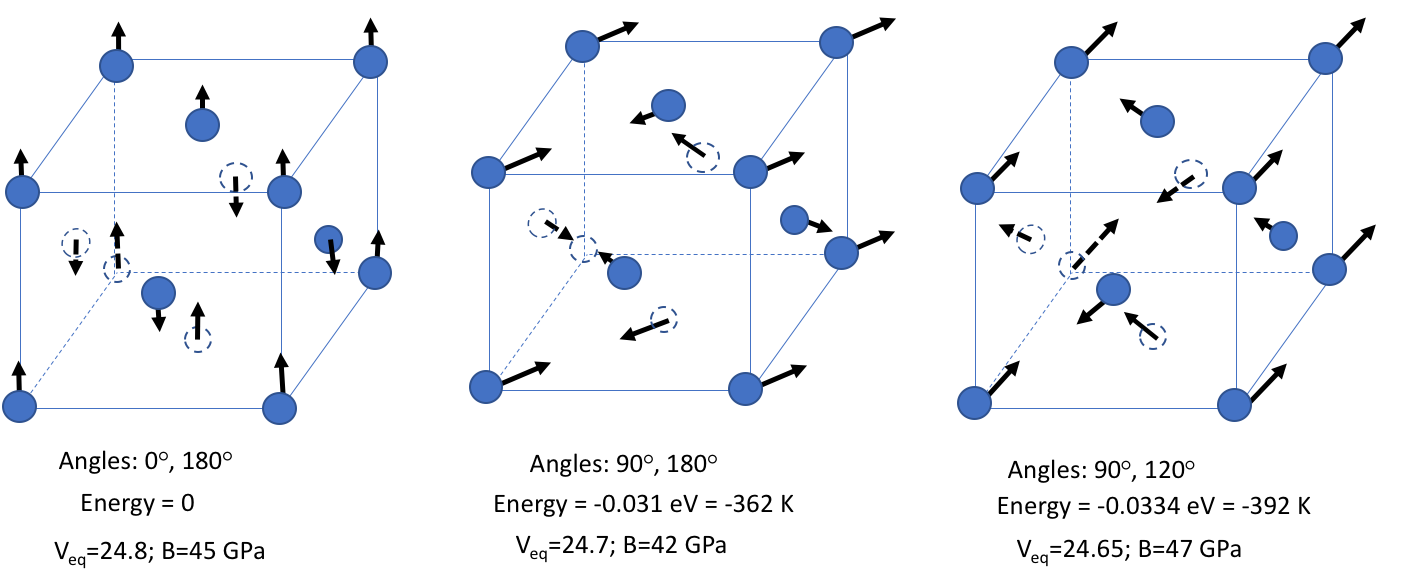Babak Sadigh (17-ERD-041)
Executive Summary
We are developing a novel methodology that can simulate magnetic spin fluctuations coupled with lattice vibrations, and are adding it to existing electronic structure codes. The result will provide an unprecedented first-principles capability to study pressure-induced structural phase transformations under dynamic loading conditions in materials with complex electronic structures, such as iron and plutonium.
Project Description
The study of magnetic spin fluctuations in materials and their coupling to lattice vibrations and instabilities has a long history, but is still in its infancy when it comes to quantitative understanding and predictions. For materials near a quantum critical point (such as plutonium metal), or for magnetic or strongly correlated systems undergoing structural transformations to paramagnetic or weakly correlated phases, the detailed understanding of spin fluctuations and their impact on interatomic interactions is still lacking. In recent years, several experimental and theoretical developments have taken place in two seemingly disparate fields: the physics of plutonium metal and discovery of fluctuating spin and orbital moments in this system, and in situ x-ray characterization of materials undergoing laser-induced shock compression and discovery of a reversible structural transformation. Currently, there are no quantitative models for the kinetics of pressure-induced structural phase transformations in magnetic and correlated systems because the massive electronic transitions occur concurrently. We are developing a novel capability to calculate the impact of thermal and quantum magnetic fluctuations on interatomic interactions and atomic motion in correlated materials (such as plutonium and iron) from first principles. This new computational capability will address two pressing stockpile stewardship challenges: to model the mechanical and thermal properties of plutonium and its alloys as they age, and to understand the kinetics of volume-collapse transitions in magnetic (e.g., iron) and correlated systems (e.g., rare earths and actinides) under dynamic loading. Improvements to our understanding of plutonium will provide a platform for building physics-based predictive models of plutonium aging and temperature-dependent properties.
If successful, we will introduce a new capability to substantially improve the current first-principles modeling of the structure and dynamics of many magnetic and correlated metals and alloys. From a broader perspective, spin–lattice fluctuations are fundamental to the understanding of such phenomena as high-temperature superconductivity, ultrafast laser demagnetization, magnetic coercivity in permanent magnets, and spin currents in spintronic devices that use the properties of electrons to transmit, process, and store information. This new capability will bring unprecedented understanding of the complex phase diagram of plutonium metal, and explain, for the first time, many of its puzzling temperature-dependent mechanical and structural properties. The new capability will also improve understanding of material behavior under extreme conditions. For example, it will explain recent laser-driven shock experiments in single-crystalline iron that have revealed reversible structural phase transformations accompanied by massive demagnetization on a 100-ps timescale.
Mission Relevance
Our work supports the DOE nuclear security objective of maintaining the safety, security, and effectiveness of the nation's nuclear deterrent without nuclear testing. The code development and computational challenges involved in this project will benefit Livermore's high-performance computing, simulation, and data science core competency, while the improved understanding of plutonium will support the stockpile stewardship mission focus area.
FY17 Accomplishments and Results
In FY17 we (1) made a novel implementation of constrained-spin density functional theory within the molecular dynamics simulation model, Vienna Ab Initio Simulation Package (VASP) code; (2) implemented a new semi-direct minimization technique that can speed up the calculations by more than an order of magnitude; and (3) found new low-energy spin-configurations in delta-plutonium (see figure).






